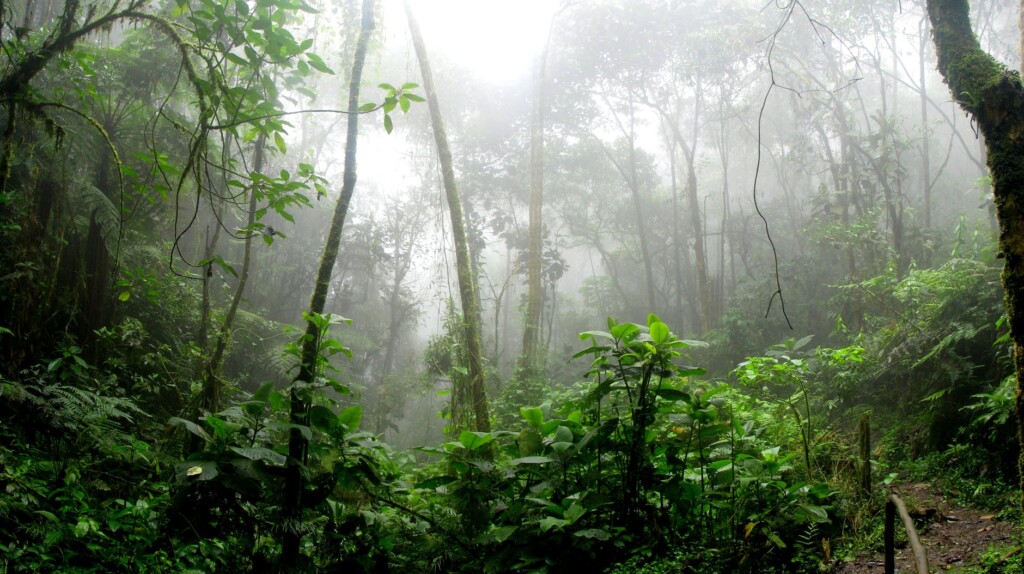
Brazil’s Amazon rainforest is on fire.
This isn’t the first time the world’s most diverse ecosystem is burning. So far, nearly 73,000 fires have been recorded this year. That’s almost two times the number of fires from last year.
The Amazon rainforest produces 20 percent of the Earth’s oxygen and absorbs carbon from the atmosphere. When the rainforest burns, it releases up to 140 billion tonnes of carbon into the atmosphere. That’s about what we humans produce in 100 years.
The fires are destroying the home of 10 percent of the world’s animals. But that’s not it. With the release of a large amount of carbon dioxide into our atmosphere, it makes fighting climate change more difficult.
This is the result of the 88 percent increase in deforestation of the Amazon rainforest.
Here in B.C., we’re no strangers to forest fires. However, there are ways you can still help.
1) Reduce your paper and wood consumption
A lot of our paper and wood products come from the trees cut down from the Amazon rainforest. These include toilet paper, printing paper, building materials, and furniture.
While there are steps we can take, such as buying furniture made from reclaimed wood or printing on both sides of a piece of paper, we can also look for products certified by the Forest Stewardship Council (FSC) and the Rainforest Alliance (RA). Although these are US-based sites, some of the products are available here in B.C.
2) Reduce your beef consumption
The deforestation of the Amazon rainforest started with ranchers clearing the land for their cattle. Brazil is the world’s largest exporter of beef and provides 20 percent of the world’s global beef exports. Buyers of Brazil’s beef and cattle products include Timberland, Nike and Walmart.
Unfortunately, cows produce more methane than any other livestock. By raising them, additional greenhouse gases and fossil fuel use including methane and nitrous oxide are released into the atmosphere.
3) Switch to zero-waste alternatives
Consider switching regular plastic items for zero-waste alternatives such as:
4) Change the way you’re searching online
Ecosia is a search engine that uses its profits to plant trees. The search engine plants a tree with every search made. This removes 1 kg of carbon dioxide from entering the atmosphere. Every month,
Since 2009, Ecosia has planted 60 million trees. In that same year, they built a solar energy plant to power their searches making all their servers run on 100 percent renewable energy.
5) Reduce the use of artificial turf
We know it’s a bit bias of us but we believe in natural solutions to green spaces. Artificial turf was introduced because it was considered low maintenance. For sports fields, it was considered safe. However, we’ve seen evidence of the opposite.
But let’s look at the environmental impacts.
Artificial turf makes sense for areas like Arizona, California or desert-like areas in Western Canada because the water is scarce. For areas that get plenty of rainfall such as the Lower Mainland, Vancouver Island, and the Interior, high-quality turf makes more sense. Using artificial turf made of plastic prevents the water and rainfall from being absorbed back into the Earth.
There is a growing concern that not all plastics are being responsibly recycled. When it’s time to replace the sports field, golf course, or lawns, there’s a good chance of the artificial turf is going to end up in the landfill. Over time, the plastic and rubber components of artificial turf also end up in the environment.
These are just 5 simple ways you can start to make an environmental impact locally. We suggest picking one or two to start if you haven’t already.
Drought tolerant sod is another option for residential and commercial lawns, golf courses, athletic fields, and parks and institutions. Whether it’s for a first-time installation or upgrading, drought tolerant sod is a move towards becoming more environmentally friendly. Our TWCA-approved drought tolerant sod requires on average 30-50% less water than typical turf varieties. Be one of the first to make your mark and see what this sod can do for you. You’ll be surprised.
Questions about our high-quality sod products? Contact us today.
Order fresh sod now or request a custom quote for your project.
Save with a Yearly membership. Custom fertilizer program. Fertilizer, topsoil, seed delivered to your door before you need it. Don’t forget, we will remember for you!
Western Turf Farms Abbotsford
39183 No.5 Road Abbotsford, BC V3G 2G3
Western Turf Farms Langley
7880 240 Street Langley, BC V1M 3P9
© Copyright 2025, all rights reserved by Western Turf Farms. By using our website you agree to our Disclaimer and Privacy Policy.